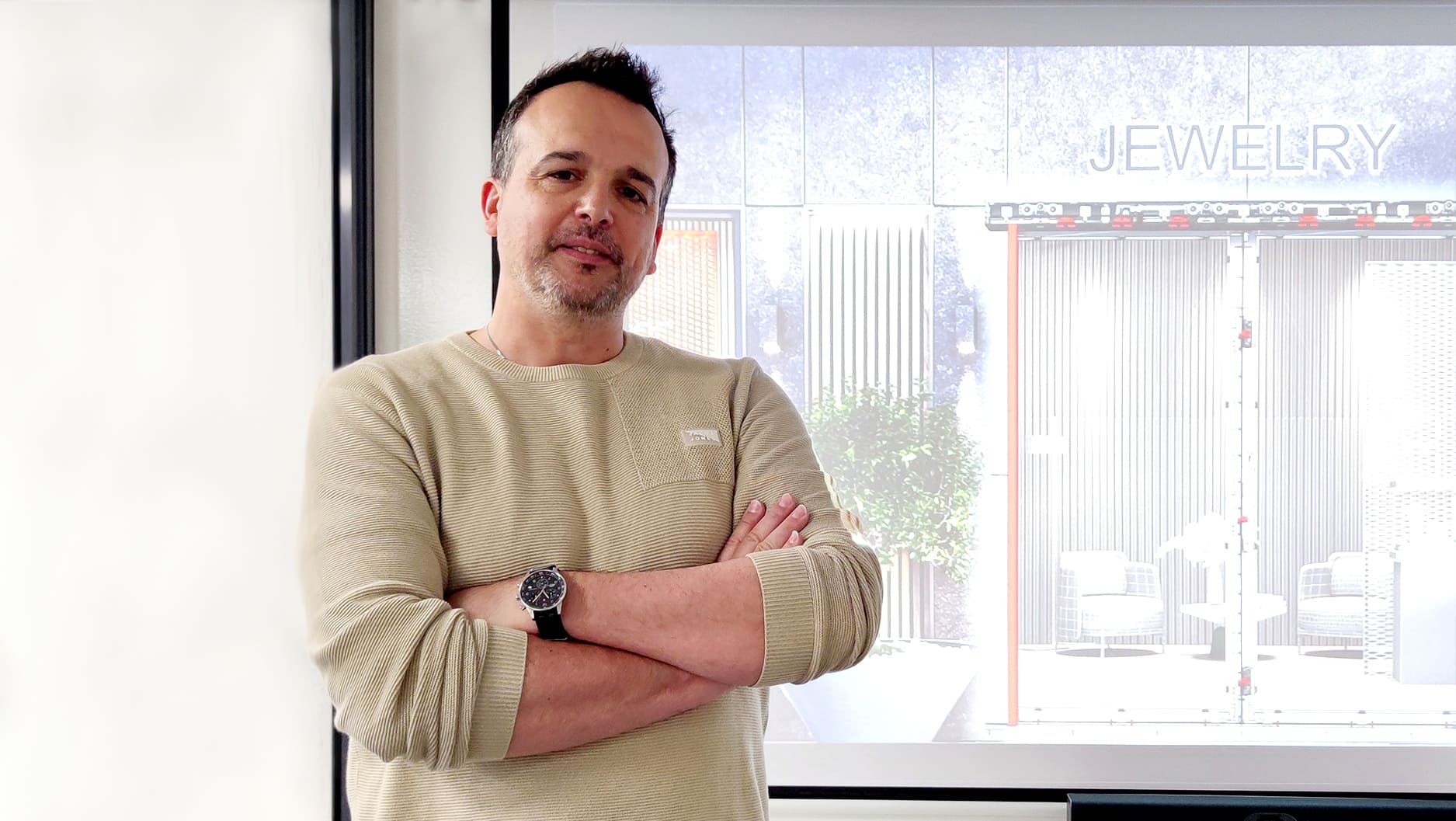Innovation and design
Interview with Gabriel Gonzalez, mechanical engineer, on the development of the RC2 automatic anti-theft door
Gabriel González worked on the development and materialization of Manusa's new RC2 automatic anti-theft door. He tells us all about the process that involved different departments and the features that make it a door that provides advanced security for properties.

Which Manusa departments have been involved in the development of the RC2 door? How have you articulated your efforts?
Initially, the commercial team identified and transmitted to us our customers’ need to improve security. In the R+D+i team, we began this project focusing in particular on offering a higher degree of security in the event of a burglary, without losing the comfort offered by our automatic doors. To do this, we relied mainly on the experience of the people who are part of the Manusa technical team.
The product design has been led by the mechanical R+D+i team with ongoing support from our software, firmware and electronics colleagues, as well as our suppliers.
A very important part of the design phase was the support provided by the prototyping team, who validated assemblies, suggested improvements, and verified the expected features of the door. And to ensure that we did not lose the manufacturing perspective, we also relied on the process engineering team to ensure that the design would allow for process repeatability and provide the quality that our customers expected.
What are the specialties of the engineers involved in the development of RC2? What contributions does each discipline make to the production of these doors?
There are several different profiles that have participated in the project and all of them have contributed interesting points of view that have shaped the final result. For example, together with the mechanical engineers, we designed the complete door solution, 3D prototypes and manufacturing drawings. With this team, we also prepared the installation documentation, technical data sheets and manufactured prototypes. We did all this while designing and integrating the various security systems that make up the RC2 door.
We also had the assistance of the prototype technicians who helped us assemble and build the prototypes and test mock-ups. This team performed the load and impact tests on the mock-ups prior to the external laboratory tests and checked the final installation of the doors. They are an essential filter to ensure that our doors are installed correctly and comply with specifications.
Another excellent contribution was made by the electronic and telecommunications engineers, who helped us with the electrical and functional aspects of the door. This team took care of issues ranging from the electrical design to the programming of our electronics in order to be able to control all the expected features so that the door would be safe for people.
And last but not least are the process engineers, who provided the productive vision from the design phase to detect points that may hinder manufacturing or increase product costs unnecessarily, all the way up to the industrialization phase. They were responsible for providing technical solutions so that the door could be manufactured within the parameters established in the design.
What technical peculiarities does the RC2 door have, compared to other doors that also offer some level of security?
Thanks to its design, the RC2 door offers maximum security without compromising either aesthetics or safety. It is a lightweight door that provides the best possible visibility and incorporates internal reinforcements that guarantee the best performance.
RC2 can be seen as a combination of a series of small solutions that provide an overall security solution for our door.
Its moving leaves incorporate an automatic three-point lock with manual release which has been developed by Manusa. This makes it very convenient to use for customers using automatic systems and avoids problems related to power failures. It is a door that has a safety guide system at the bottom and also at the top of the leaves, preventing levering around the perimeter.
What is the main new feature in this model?
The fusion between security and functionality offered by the door itself is the biggest novelty. Another of the points that we find most interesting is the possibility of managing the door remotely through the Doorwifi application and having total control over the status of the door. The safe closing of the door is controlled by sensors, which allows us to know at all times if the door is working correctly. In the event of any anomaly, the user would be notified, providing additional peace of mind to our customers.
How are security and aesthetics combined in the RC2 door?
Sometimes improving security requires the installation of visual or practical barriers, such as railings, bollards or shutters, which this project set out to avoid. The door blends in perfectly with the structure and is hardly distinguishable from a standard sliding door. It has a profile thickness of only 30 mm, it is light, and the safety glass provides a clean and modern aesthetic without compromising on protection against break-ins.
